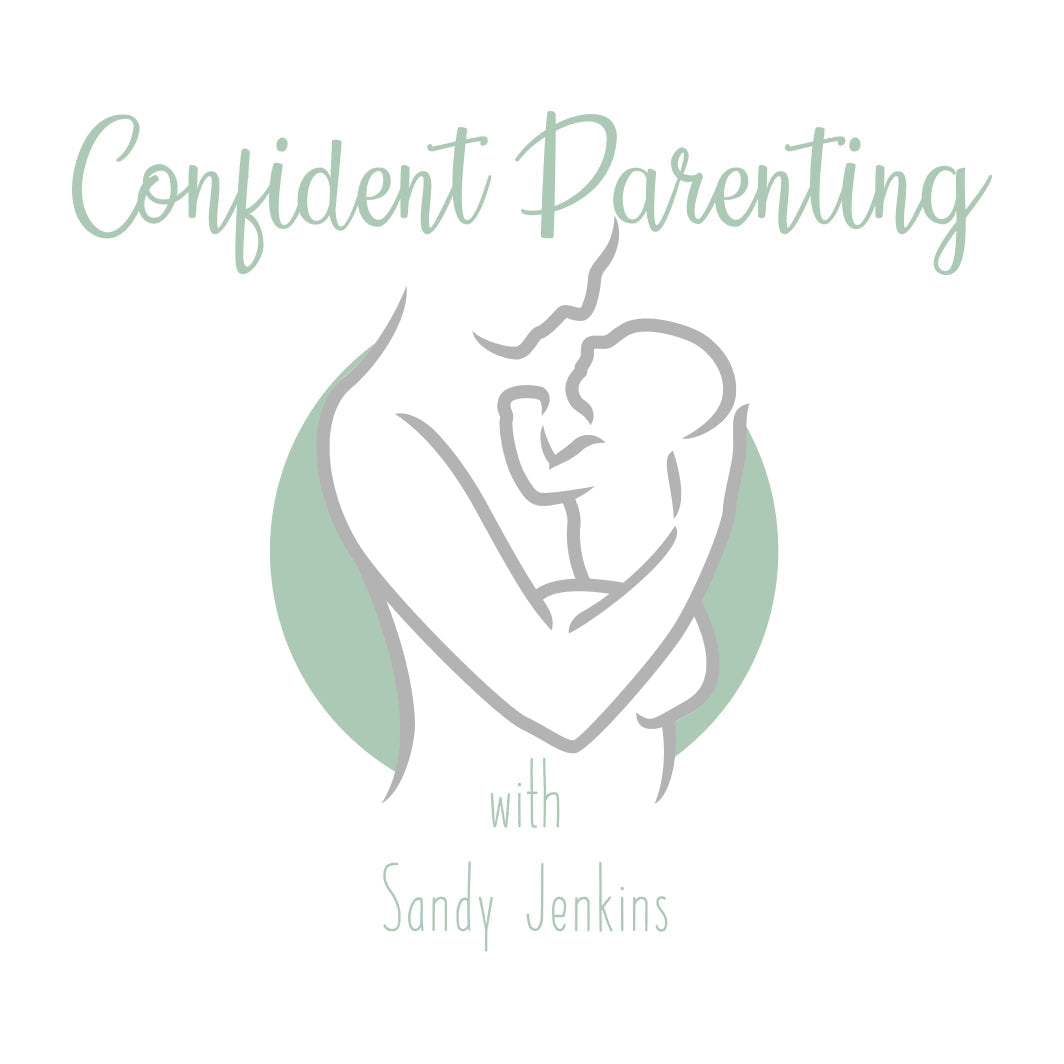
5 Techniques to Help a Newborn That Won’t Burp
Sandy Jenkins
Apr 30, 2025
0 comments
Sandy Jenkins is a Postpartum Counsellor and Certified Newborn Care Specialist. Her passion includes educating and supporting new parents through the early stages of having a baby, so that they can ease into parenthood confidently.
For more information on how Sandy can support you, CLICK HERE

Do you find yourself sitting, pacing or bouncing your newborn for 30 mins or even longer after a feed, just trying to get them to burp?
Burping your baby is a necessary part of their feeding routine. When your baby swallows milk (especially bottle-fed babies), air bubbles can become trapped in their stomach and cause discomfort, crankiness and fussing. Burping allows your baby to remove some of that gassiness to relieve the pain. It also helps prevent excess spitting up and is essential for babies struggling with reflux.
That said, there's no rule that babies have to burp after every feeding. Some babies need to burp a lot, while others rarely do. In general, breastfed babies don't need as much burping as bottle-fed babies because they tend to swallow less air when feeding. But every baby is different, so follow your baby's cues.
Why Are Some Babies More Difficult To Burp Than Others?
Some babies are well equipped to burp on their own, whilst others need extra coaxing to release the air bubbles, and often age is the biggest indicator of a baby "who basically burps herself." Whilst burping is a natural reflex, as your baby grows it does get easier for them to burp.
Factors such as the ability to move oneself out of an uncomfortable position, stronger back and neck support, more tummy time (because they have more awake time) and learning how to eat without swallowing too much air, all contribute to the burping process.
Another strong contributor is the amount of air a baby has swallowed during their feed. Think about it this way; have you ever slurped back a fizzy drink in a rush, or an ice cold beer because you were just so thirsty? If I had to ask you what the result of that was, you would probably respond with "I just couldn't help myself and had to burp!" The same goes for a baby. If the milk rushes into their mouth and they are frantically swallowing, they can also take in a ton of air at the same time. Things like a strong let down during nursing, or a baby bottle with incorrect flow may cause this. In this case your baby may almost instantly burps as you raise them into an upright position, making it seem as though they burp quite naturally, but it may just be due to the consumption or excess air.
.
However, most babies (especially newborns) need a helping hand to burp.
What Happens if a Baby Doesn’t Burp?
If you're concerned about what happens if your baby won't burp after feeding, try not to worry.
He'll likely be just fine and will end up passing the gas from the other end. Other babies may unfortunately, spit up in the crib later on, or they'll wake up during a sleep fussy or crying from discomfort, and need that burp you tried to get out of them before. Trapped air always finds a way out of the body, whether it comes out the top or out of the bottom.
Can Your Baby Choke if Not Burped?
You may have heard from a friend or relative that babies who sleep on their backs will choke if they spit up or vomit during sleep. So you MUST ensure your baby is burped before you put them down on their back (or even tell you to make them sleep on their tummy). This is definitely a myth.
The actual fact: Babies automatically cough up or swallow fluid that they spit up or vomit if placed on their backs. This is a reflex to keep their airway clear.
Studies have shown no increase in the number of cot related deaths from choking among babies who sleep on their backs. It is more likely that your baby will wake themselves and cry out from discomfort, before they spit up or vomit.
.
How often should I burp my baby?
Another consideration is that trapped air can create the feeling of being full, when in fact a baby has not completed their feed. It is recommended that you burp at least once during a feed, to release any trapped air that may be creating the sensation of fullness.
If you stop feeding your little one because they are showing "I am full" signs, and do not attempt to burp them before putting them down for a nap or their sleep, your baby will most likely wake early due to hunger.
If she starts protesting during a feeding, try burping baby right away to see if it’s an air bubble in her tummy that’s causing her distress.
.
How often you burp baby depends on how you’re feeding her:
- When bottle-feeding, burp baby at least once, about halfway through feeding or after every 60 - 90 mls (2-3 ounces), or more often if she seems fussy or is taking a long time.
- When breastfeeding, burp when you switch from one breast to the other to make room for more milk. Keep in mind that a baby who’s swallowed air may stop eating and refuse to switch breasts simply because she feels uncomfortably full. If your newborn managing only one breast at a time then burp mid-feed on the same breast.
A good belch can calm fussiness during and after feedings.
.
What To Do if Your Baby Doesn’t Want To Burp?
As always, consult with your pediatrician or doctor for tailored advice to your situation. In the meantime, you can take a look at a few of these ideas:
.
.
Here are 5 Techniques to Help a Newborn That Won’t Burp:
1. Bouncing or Patting Your Baby
Patting your baby on the back helps move the air bubbles up, but sometimes the patting just isn’t enough. If he won’t burp, try patting him more firmly with your whole palm, as light pats may not be effective. Another option is to pat his bottom. Many parents swear this is the only way to get their babies to burp.
If patting doesn’t work, see if rubbing his back does the trick. Move your hand gently but with enough pressure from the bottom to the top of his back.
And finally, try sitting him on your lap and gently bouncing him up and down. Support him in the same way as you would if you were burping him sitting upright, but move your leg up and down.
Keep in mind not to move too vigorously, as he has just eaten and may spit up the breast milk or formula right back up with too much motion. (Have a burp cloth or bib handy!)
Some parents also find that walking around with baby in a comfortable carrier can help release trapped air more naturally after a feed—especially if their baby prefers motion and closeness.
.
2. Alternate Between Various Burping Positions
The most common burping position is over the shoulder, but others may be more effective for yours. Take a look at a few other ways to burp him and see which ones work:

- Hold your baby way over your shoulder. One mistake parents make with burping over the shoulder is they don’t hold the baby high enough. Not only should his head reach over your shoulder, but his belly should rest on your shoulder as well. Then, lean back enough so that he’s at a slight incline (instead of upright, or worse, angled as if he’s leaning back).
- Carry him in a football hold. Place him tummy-side down on your forearm with his face toward your elbow and his limbs dangling on either side of your arm.
- Lay him across your lap. In a sitting position, place him stomach side down across your lap.
- Sit your baby upright. Sit him on your lap with your hand supporting his chest and head, leaning him slightly forward. Be careful that your hand isn’t actually touching his neck or throat.
3. Change Baby’s Position
It’s easy to keep doing the same thing over and over, especially when you’re sleep deprived and feel stuck.
But not only might we have better luck burping in other positions, the actual changing of positions might just do the trick.
For instance, if you’ve been holding your baby over your shoulder, move him to a football hold. If that doesn’t work, try sitting him upright. You might find that the actual movement itself helps him burp.
.
4. Opt for Burping Exercises
Sometimes those air bubbles and gas are so stubborn, none of the positions you try seem to work.
In this case, it’s not so much about burping your baby as it is helping him deal with the gassiness through simple exercises and body movements.
- Rotations: Sit your baby on your lap and support his chest and head as you would if you were burping him. With your other hand, support his back and neck. Then, slowly rotate his upper body clockwise, then repeat by moving it counter-clockwise.
- Forward and backward: Start off in the position above, but instead of rotating him in a circle, move him forward and backward slowly. First, lean him forward for a few seconds, then move him back to an upright position. Then, lean him slightly back, as if you were going to lay him down. Return to sitting upright, and repeat this motion of forward and backward.
- Elbow to knee: Lay him on his back. Then, take his right elbow in one hand, and his left knee in the other. Slowly move them toward each other above his chest, as if they were going to touch. Repeat the same with his opposite limbs. You’ll also be able to get him to fart some gas this way (instead of burp).
5. Stretch Their Body
Here is a stretch from Dr Sara Perry (Inspired Chiropractic and Wellness) you can do at home with your baby to help get all that gas out. It is gentle, effective and soothing.
.
Are You Feeling Despondent About Getting your Newborn To Burp?
Getting those burps out can be frustrating, especially when your baby already takes a long time to feed. Keep in mind that your little one may not need to burp after every feeding (for instance, breastfed babies are likely not swallowing as much air). Or perhaps the fussiness is due to something else that you might have to look into with your Doctor, and nothing at all to do with burping.
Remind yourself that this stage will pass, as your baby grows their digestion will improve and he will be naturally better at expelling his own gas.
With Love,
Sandy

